[ad_1]
What is techno music?
Well, if you haven’t been living under a rock, you might have some idea. But what makes a techno track… techno?
In this article, we’ll explore the origins, development, key characteristics, and cultural impact of techno music. Feel free to jump directly to any section you’re interested in 😊
What is Techno? The Origin Story
Most people will agree that Techno music was born in the mid-1980s in Detroit, Michigan. A group of young African American producers and DJs, influenced by European electronic music began experimenting with new sounds.
The key figures in this early scene were Juan Atkins, Derrick May, and Kevin Saunderson.
These 3 guys are often called the “Belleville Three” after their Detroit suburb. They blended elements of funk, electro, and house music with the emerging electronic sounds from Europe. Juan Atkins, often credited with coining the term “techno,” was particularly influenced by Kraftwerk. Their mechanical, robotic sounds and emphasis on technology matched Atkins’ vision for his music.
One of the first techno tracks is Juan Atkins’ “Clear,” released under the alias Cybotron in 1983.
This track laid the foundation for what would become the techno sound: driving rhythms, synthesized melodies, and a futuristic vibe. Derrick May’s “Strings of Life,” released in 1987 under the name Rhythim is Rhythim, further defined the genre with its emotive strings and energetic beats.
What is Techno: Key Characteristics
Let’s face it: if you’ve come to this article, you probably want to know what techno is. You want to be able to recognize a techno track. So let’s go through they key components.
Rhythm and Beat
At it’s most foundational core, techno is a repetitive 4/4 beat. A punchy kick marks each beat. Techno producers will often use samples from drum machines like the Roland TR-808 and TR-909. You’ll often hear terms like “the 909 claps” or “the 808 kick“. That’s what people refer to.
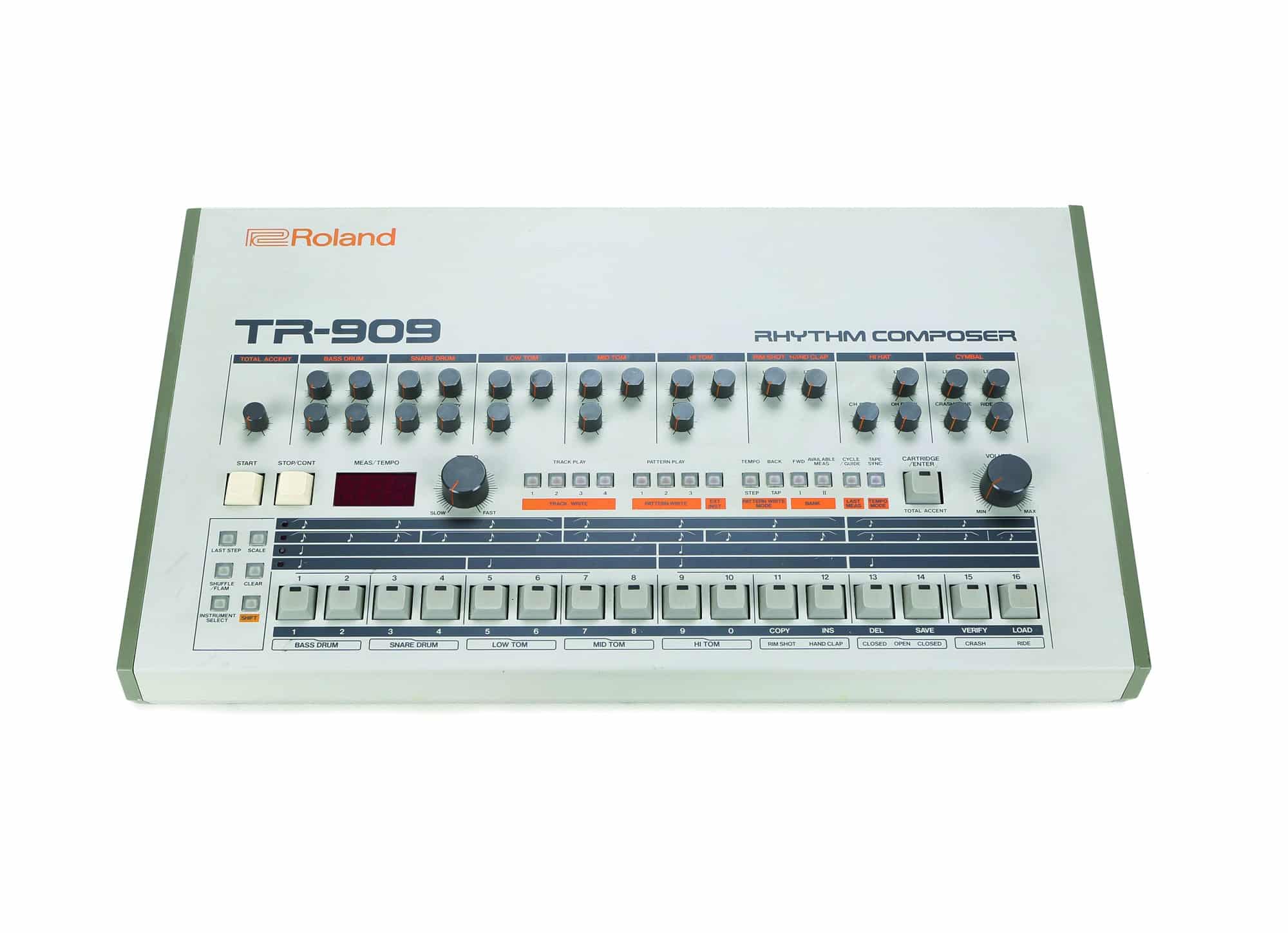
The steady, unrelenting rhythm creates a hypnotic effect, drawing listeners into a trance-like state. This focus on rhythm and beat is essential, driving the music forward.
Check out how hypnotic the intro of this Amélie Lens track feels:
The BPM is often set around 125-135, but can go up all the way to 150 or more for sub-genres such as Hard Techno.
The other components of a techno beat feature:
- Open hi-hats, usually on the off-beats (i.e. in between each kick)
- Closed hi-hats and shakers, filling up the high-end of the spectrum and driving the track forward
- Ride cymbals and percussion
The bass
There are so many different genres of techno that pinpoint exactly what the bass sounds like is almost impossible.
However, a techno bass will usually fall into one of two categories:
- a pulsating, acid-style bass on a 16th note pattern;
- a rumble, i.e. a lot of of reverb on a kick 😅
Check out these 2 examples:
Example 1 (jump to 0:58 for the drop):
Example 2 (jump to 1:29 for the drop):
Synthesizers and Sound Design
Techno relies heavily on synthesizers and electronic instruments.
Synthesizers like the Roland TB-303 and SH-101 craft the genre’s distinctive melodies and basslines.
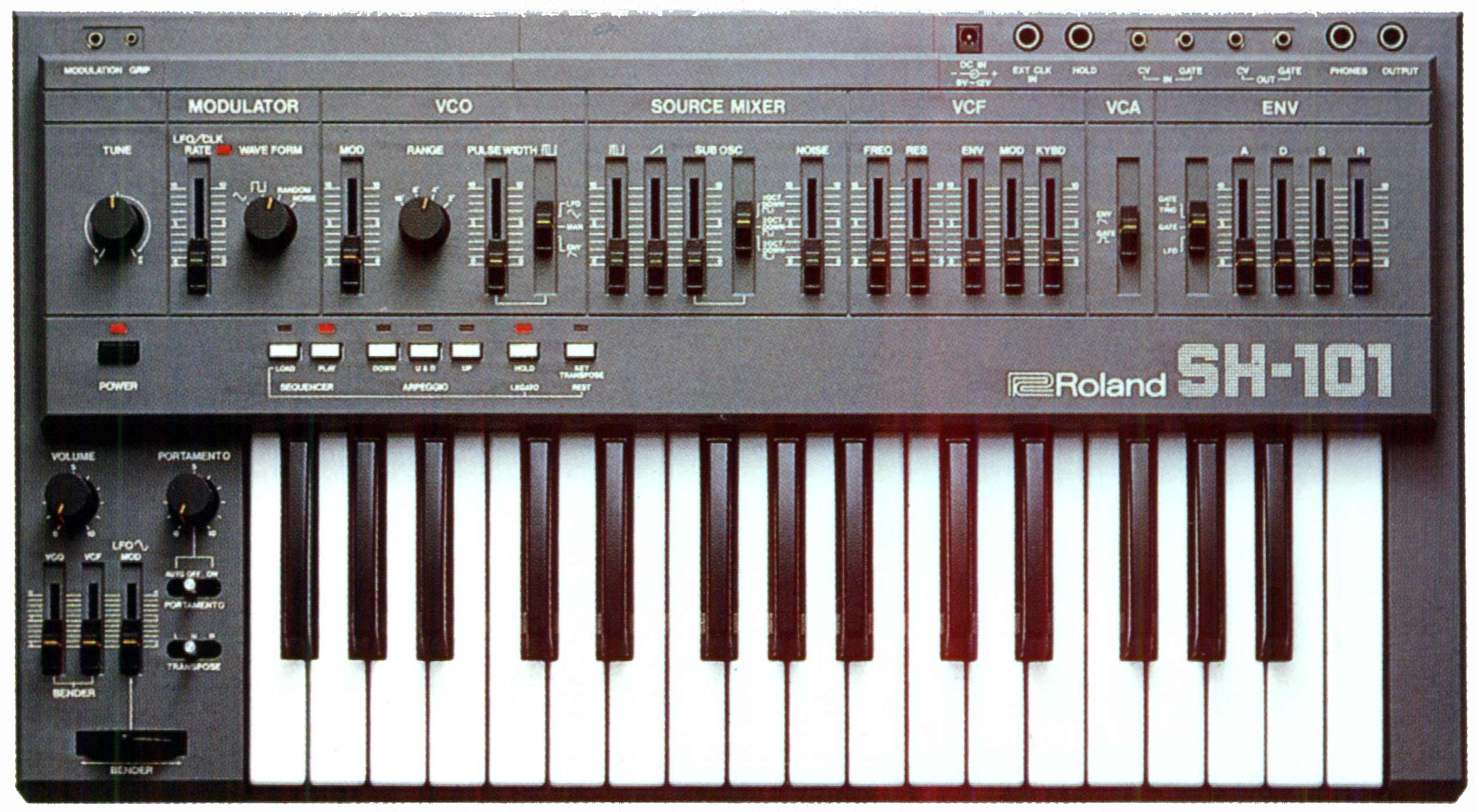
Producers use modulation, filtering, and effects processing to create unique, futuristic sounds that evoke a sense of otherworldliness.
Wanna learn how to make Techno yourself? Check out this free course on our YouTube channel:
Arrangement and Song Structure
Techno music is known for its minimalist approach. Tracks often revolve around a few core elements that evolve over time. This minimalism, combined with repetitive rhythms and sequences, creates a hypnotic effect.
A track will often feature elongated intros and outros, featuring minimalist drums.
This serves 2 purposes:
- creating that sense of hypnosis;
- making it easier to transition in and out of tracks for DJs
Producers use various effects like reverb, delay, and phasing to add depth and space to their tracks. These effects help build a soundscape, whether it’s a dark, industrial or euphoric.
While this genre of music is rooted in repetition, the best tracks feature subtle changes that keep listeners engaged.
This could involve gradually introducing new elements, shifting the focus from one instrument to another, or tweaking effects over time. Dynamic changes in volume, intensity, and texture create a sense of progression and narrative within a track, making the listening experience more engaging.
Subgenres and Evolution
Techno has diversified into numerous subgenres since its inception. Some notable ones include:
- Detroit: The original form, with soulful and melodic elements.
- Minimal: Focuses on stripped-down, minimalist soundscapes.
- Acid: Features the squelchy, resonant sounds of the Roland TB-303.
- Industrial: Incorporates harsh, mechanical sounds with a more aggressive, raw aesthetic.
Techno: Who Should I Check Out?
So hopefully you now have a better understanding of what techno is.
But what is even better than reading a (moderately) long article is check out some tracks! So if you want to dive into the world of techno, here are some artists you should listen to:
- Charlotte de Witte. A leading figure in the techno scene, and voted best DJ by DJ Mag on several occasions. Her style has evolved over the years but is mostly focused on a high-tempo, driving style. She has also founded her own label, KNTXT.

- Amélie Lens. Another prominent figure in the techno world (and also Belgian like Charlotte de Witte), Amélie Lens focuses more on the industrial side of techno. She has a dark and relentless sound, delivering hard-hitting tracks and intense DJ sets.
- Adam Beyer. The founder of Drumcode Records is also one of the well-known techno producers. Expect more melodic productions.
- Enrico Sangiuliano. Italian producer and husband of Charlotte de Witte. He is known for his powerful and meticulously crafted productions. His style is characterized by its deep, driving basslines, intricate sound design, and anthemic melodies.
- Len Faki. Renowned German techno DJ and producer. He his most known for his organic approach to techno, as well as his prolific output. He often blends a variety of techno subgenres into his performances. His music is characterized by its high energy, deep basslines, and meticulous attention to detail.
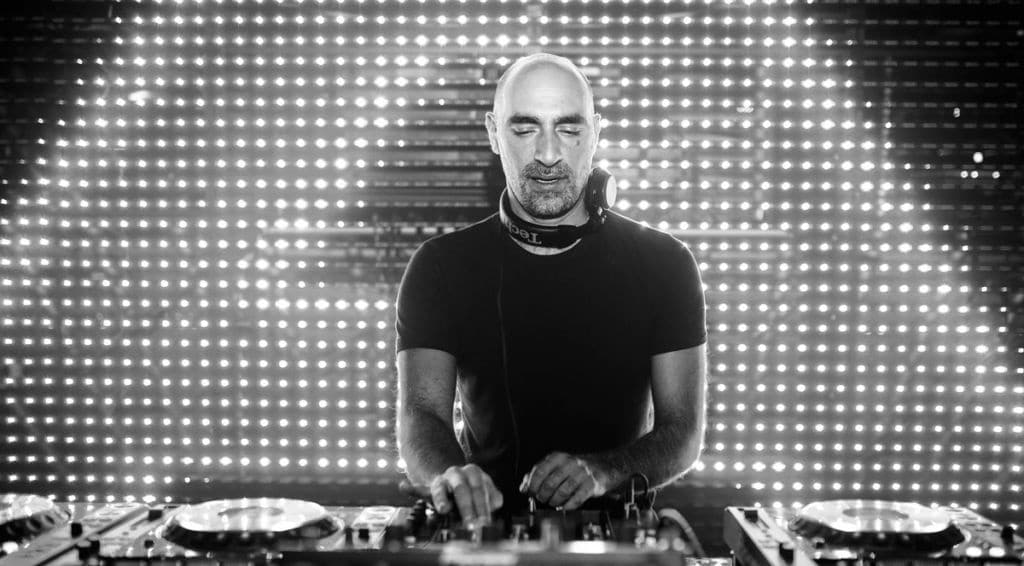
- Maddix. A leading figure in the techno and hard techno scene. If you’re looking for something faster, check out some of Maddix’s tracks, with some BPM climbing all the way up to 160. Expect plenty of acid lines and pulsating rhythms.
Last Words
That’s a wrap on this guide about techno music! Hopefully you now have a better understanding of what techno music is, and will be able to recognize a techno track the next time you hear one!
Got any questions? Anything unclear? Feel free to reach out to us at [email protected]
[ad_2]
Source link






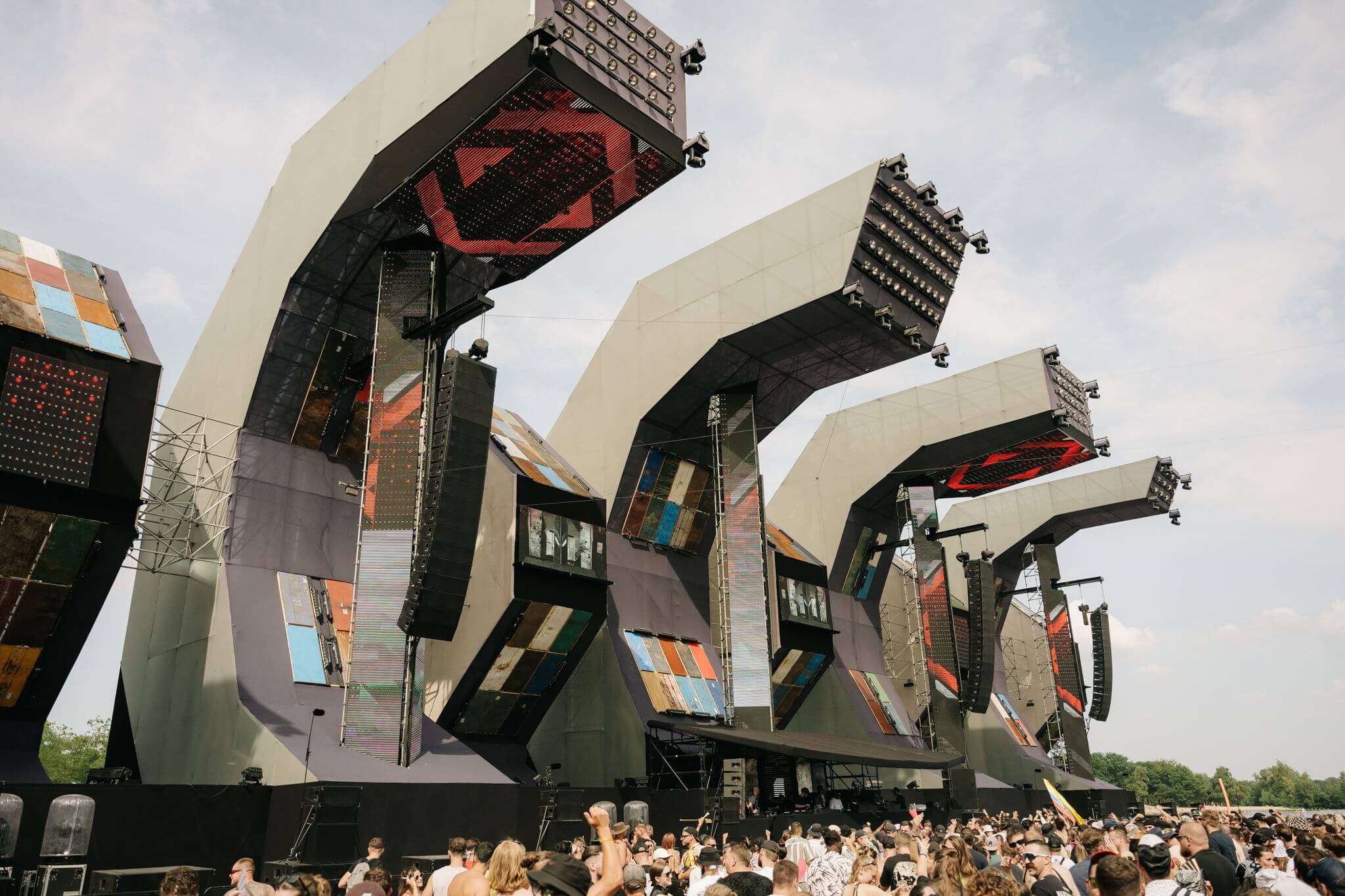





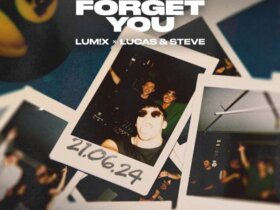



Leave a Reply